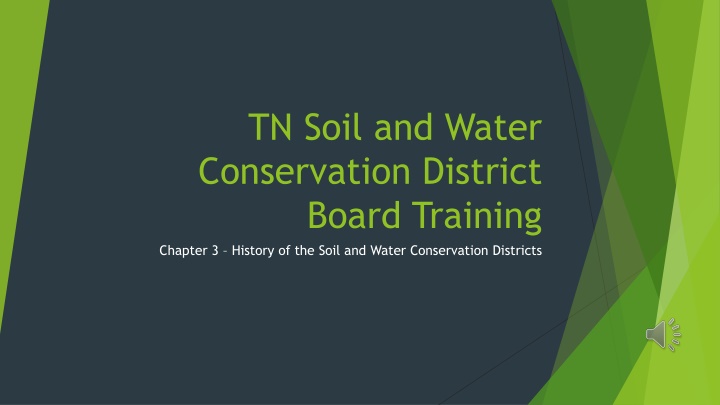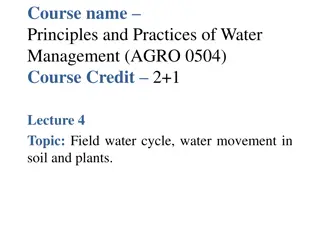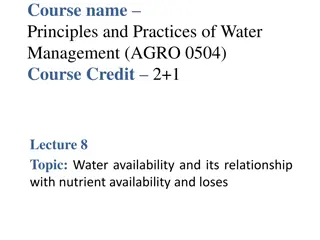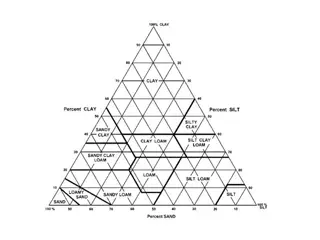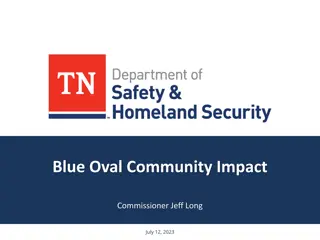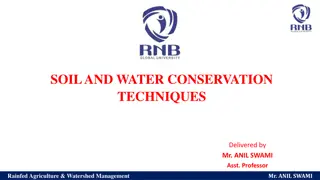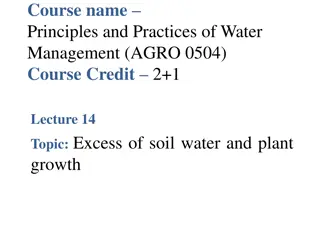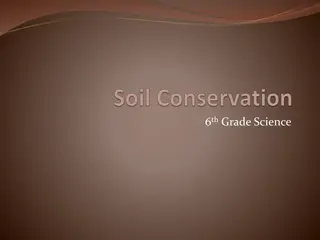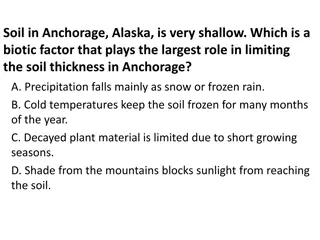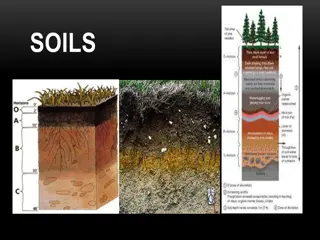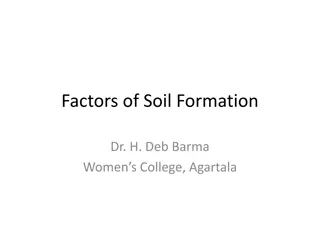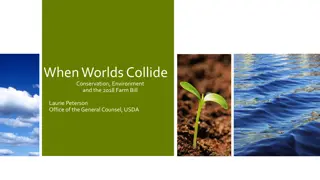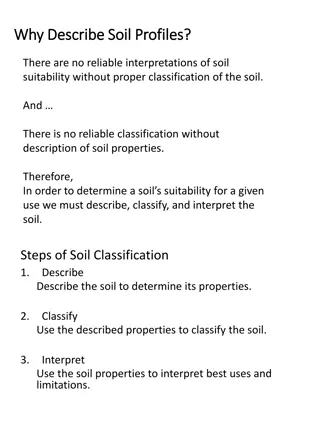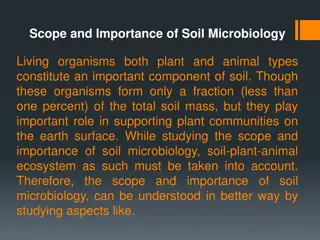History of Soil and Water Conservation Districts in Tennessee
The history of soil and water conservation districts in Tennessee dates back to the Dust Bowl era of the 1930s, leading to the implementation of federal laws and policies focused on soil conservation practices. Timeline highlights events such as the creation of the Soil Erosion Service in 1933, the Model SWCD Law in 1937, and the establishment of the Tennessee Soil Conservation Districts Law in 1939. The statute outlines the governance structure and membership of the Soil and Water Conservation Commission overseeing the districts in Tennessee.
Download Presentation

Please find below an Image/Link to download the presentation.
The content on the website is provided AS IS for your information and personal use only. It may not be sold, licensed, or shared on other websites without obtaining consent from the author.If you encounter any issues during the download, it is possible that the publisher has removed the file from their server.
You are allowed to download the files provided on this website for personal or commercial use, subject to the condition that they are used lawfully. All files are the property of their respective owners.
The content on the website is provided AS IS for your information and personal use only. It may not be sold, licensed, or shared on other websites without obtaining consent from the author.
E N D
Presentation Transcript
TN Soil and Water Conservation District Board Training Chapter 3 History of the Soil and Water Conservation Districts
Federal Law: The Dust Bowl of the 1930s led to unprecedented topsoil loss and desolation of farmland, leading to the U.S. s first resource conversation movement. Federal soil and water conservation laws and policies were put in place with the creation of the Soil Erosion Service by the U.S. Dept of interior in August of 1933. Dr. Hugh Hammond Bennett influenced congress to aid private landowners, primarily farmers and ranchers to voluntarily place soil conservation practices. Soil Conservation Act of 1935 recognizes that soil erosion is a menace to the national welfare and this it is hereby declared to be a policy of Congress Photo: USDA Named the Natural Resources Conservation Services in 1994 Model Soil Conservation District Law was developed for each state February 1937.
Timeline of History
1933: Creation of TVA, CCC and Soil Erosion Service 1991: State Agricultural Nonpoint Water Pollution Control Fund begins 1937: Model SWCD Law sent to 49 governors 1957: State Law passed to allow counties to fund SWCD operations. TCA 5-9-106 1971: TN Water Quality Control Act 1928: Soil Erosion: A National Menace by H.H. Bennett 1990: Wetlands Reserve Program created 1945: TACD created, Ag Conservation Program developed 1934: National Erosion Recon Survey 1997: State Cost-share program renamed the Agricultural Resources Conservation Fund 1962: Resource Conservation and Development created. 1939: TN Enacts SWCD Law TCA 43- 14-201; Great Depression Ends 1954: PL-566 Watershed Protection and Flood Control Act 2021 SWCD Statute revision 1940: 1st SWCD in TN 1930: Dust Bowl Begins 1972: Federal Clean Water Act 1999: TCDEA created 1936: Dust Bowl Ends 1929: Great Depression Begins 1943: 1st documented State Soil Committee meeting 1959: Last SWCD in TN organized 1985: US Food and Security Act, Local Working Groups, CRP, Sodbuster, Swampbuster 1935: Creation of US Soil Conservation Act, Soil Conservation Service 1994: Soil Conservation Service changes name to Natural Resources Conservation Service 1950: TVA, UT Extension, SCS, TDA agreement to coordinate soil and water conservation
State Law and Statutes: March 1939 Tennessee drafted the Soil Conservation Districts Law statute under TCA 43-14-201. First county to legally create a soil conservation district Sumner County 1940 Last county Lake County 1959 SWCDs are overseen in statute by the TN Soil and Water Conservation Commission. Membership: 7 representatives appointed by the Governor: one farmer and one supervisor from each grand division of West, Middle and East Tennessee; (1) one supervisor from the state at large; and four(4) ex officio members- the UT Chancellor of Institute of Agriculture, TDA and TDEC Commissioners, and the elected president of TACD.
TCA 43-14-201 SCD Law General Assembly Governor TCA 4-29-101 Sunset Law TCA 67-4-409 (l) ARCF Appointments Tennessee Soil and Water Conservation Commission (TSWCC) 7 appointed members and 4 ex-officio members Budget Requests TN Department of Agriculture Sunset Law Review Admin/Tech Support 2 SWCD Board Members Appointed by SSCC Comptroller of the Treasury Sub Recipient Monitoring Reports TDA: Division of Administration and Grants Land and Water Stewardship Section Financial Monitoring Soil and Water Conservation Districts (5 Board Members) Admin/Tech Support Organizational Diagram Of Soil and Water Conservation Districts In Tennessee Government Grant Contracts Agricultural Resources Conservation Fund Grants, Annual SWCD Operational Grants, Supervisor Per Diem Reimbursements Project approvals, field visits, and reimbursement approvals by TDA Watershed Coordinators
The TN Soil and Water Conservation Commission appoints two members to each SWCD board and provides oversight to the boards. SWCD Model Enabling Act grants: Organization of the TN Soil and Water Conservation Commission Conclusion Organization of the SWCD Soil and Water Conservation District Governance Duties and Powers of the District and Supervisors
